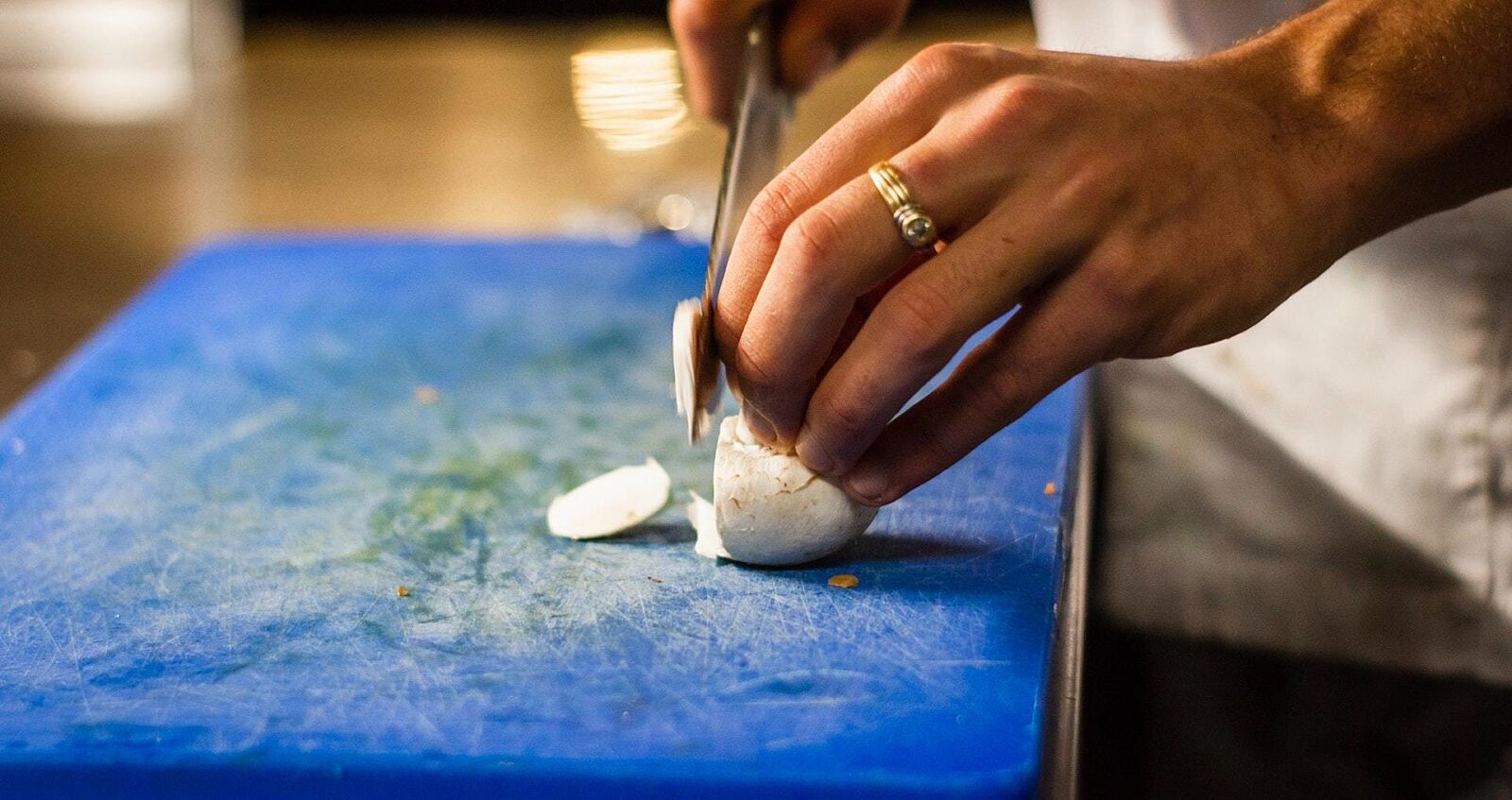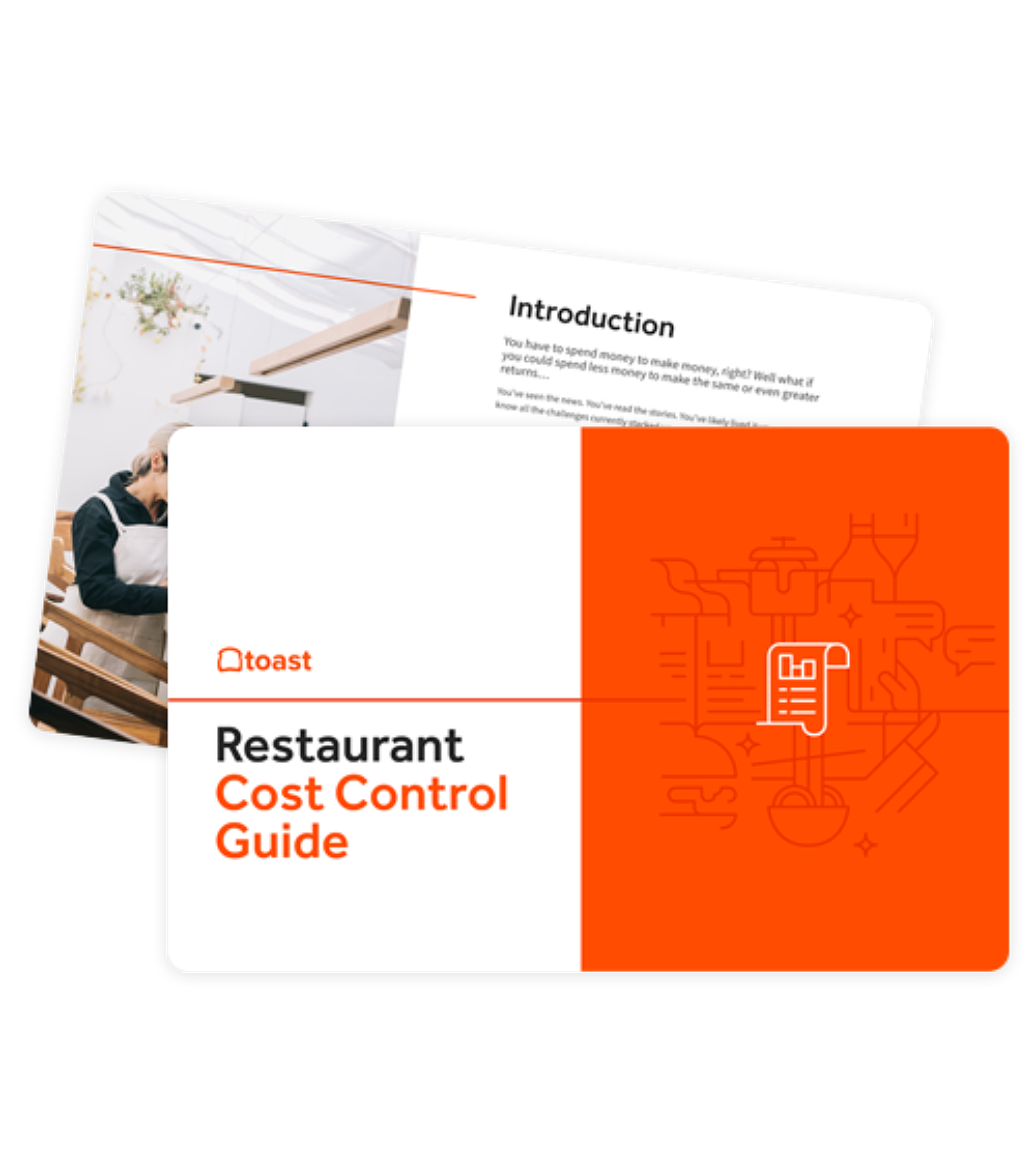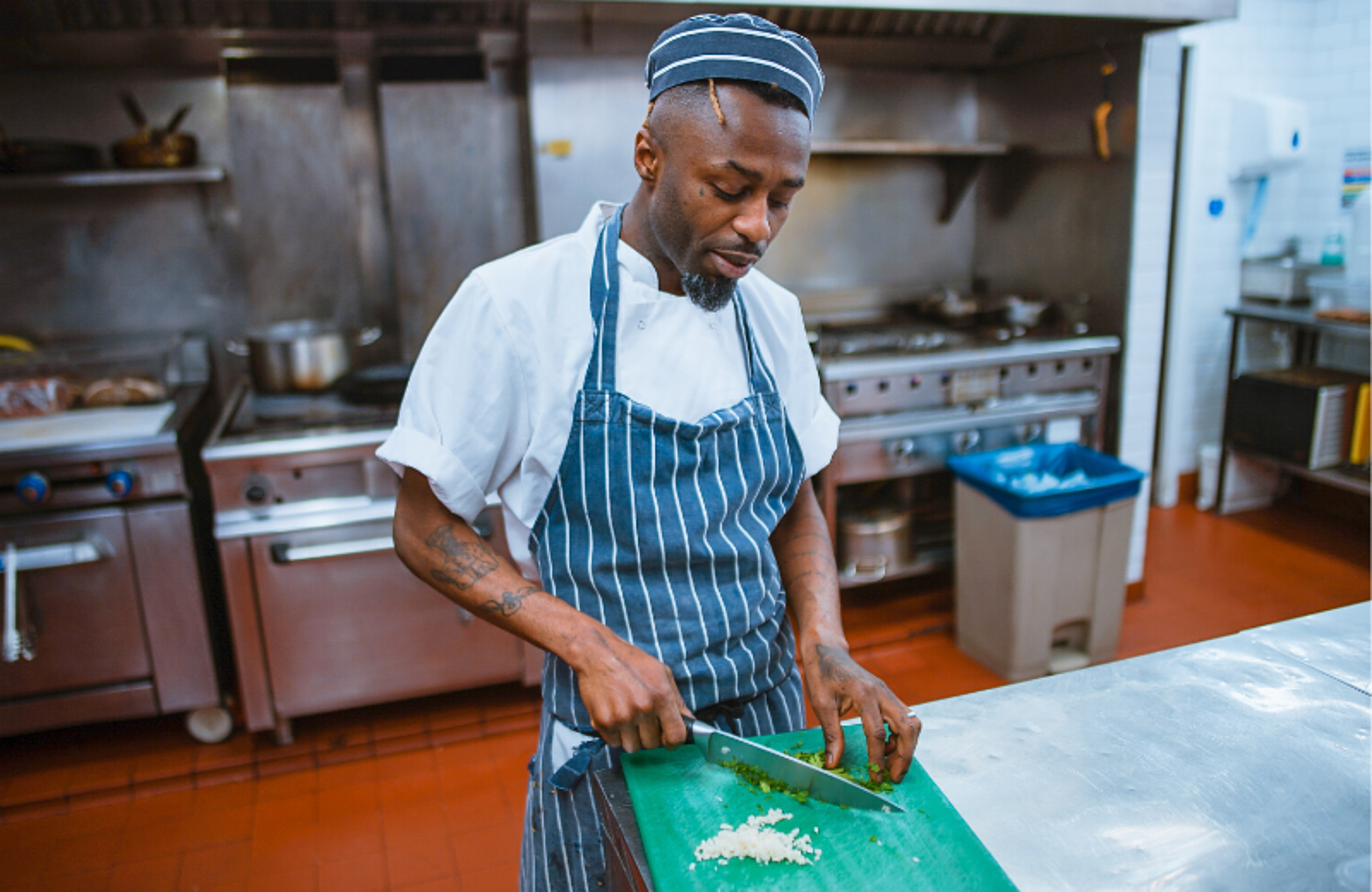
How to Calculate (and Control) Restaurant Food Cost Variance
Managing food cost variance mitigates price fluctuations and helps maximize the return on your COGS.
Justin Guinn and Cyndy Willis-ChunAuthor


Restaurant Cost Control Guide
Use this guide to learn more about your restaurant costs, how to track them, and steps you can take to help maximize your profitability.
Get free downloadWhen a new shipment comes in, how often do you look closely at the supplier price of each item instead of just glancing at it? It may be more common to do the latter, but leads to a lack of restaurant cost control - causing big food cost fluctuations to be overlooked.
Tracking and managing food cost variance is essential for restaurant success. If you don’t know the actual food cost spent on every order, you can't:
- Guage the health of your procurement efforts.
- Accurately calculate your food cost percentage for menu prices.
- Create accurate budget and sales forecasts.
Due to food costs being 25% to 35% of every dollar of food sales, being aware to your restaurant’s food cost variance can mean the difference between being in the black, in the red, or closing the doors once and for all.
Read this comprehensive yet simplified guide on calculating food cost variance and how to prepare an accurate restaurant project budget moving forward. Learn how to use invoice processing tools to automatically push product price updates through to recipes costs, cost of goods sold (COGS), and more.
What is Food Cost Variance?
A restaurant’s food cost variance is a measure of how efficient it is at projecting and managing food costs.
In this instance, food cost refers to the cost of goods sold for your restaurant. So, if it costs your restaurant $30 for food preparation for every $100 in sales, your food cost would be 30%. A positive cost variance should be low and means the restaurant is efficient at food cost management.
To measure food cost variance means an insight into the difference between the actual cost to produce menu items over a given time period and what the expected costs were over that same time. Historical data is used to project expected food costs which is why starting sooner rather than later is key.
Food cost variance is also known as the difference between the actual food costs and the theoretical food cost.
Restaurant Labor Cost Calculator
Unlock the power of data-driven labor management with our free Restaurant Labor Cost Calculator. Stop guessing and start optimizing your staffing decisions today.

Why is Food Cost Variance Important?
Calculating food cost variance is essential for restaurant success as it highlights how efficient the business is at maximizing the return on spend and sales. Managing and tracking food cost variance avoids price fluctuations and helps maximise the return on your COGS.
For example, if Will’s restaurant has an actual food cost of 35% this month with a theoretical food cost of 34%, the food cost variance is 1%.
If Alex’s restaurant has an actual food cost of 31% and a theoretical food cost of 28% this month, Alex’s food cost variance is 3%.
While the actual food costs is 4% higher (35% vs 31%), Will’s restaurant is better able to monetize those costs because they are more inline with expectations than Alex’s restaurant (1% vs 3%).
By paying attention nto your restaurant’s food cost variance, you can see previous food project costs and compare fluctuations over a long period of time, or spot hidden cost variances from one week to the next.
With proper recipe management software, you can focus on individual food items for each recipe and use it to accurately set menu prices.
Common Causes of Food Cost Variance
Having consistently negative cost variances (losing money) or even a one-off fluctiaion could be due to the following issues:
Supplier Price: Suppliers will raise food costs for many reasons such as to meet demand or due to seasonality.
Waste: Poor yields from inefficient butchering and food waste can cause items such as steak to have a high cost variance.
Staff: Your high steak variance could also be due to staff occasionally enjoying some prime cuts at family meal.
Inventory Process Errors: Issues in your inventory management system such as manual data entry input mistakes from invoices can give the impression of high food cost variance.
How to Decrease Food Cost Variance
If your restaurant is currently struggling with negative cost variance with no signs of getting better, don’t lose hope, there are some steps to take that will turn it into a positive cost variance.
Talk to Suppliers
Sometimes it’s really as easy as communicating with your suppliers to understand the situation on their end. If you’re struggling to afford a certain ingredient as the supplier price is too high, respectfully approach them and suggest a price negotiation.
By negotiating better terms, you can begin to align your actual food costs with your budgeted cost. It also helps in managing your food cost percentage effectively and learn the causes of food cost variances from a different perspective.
Confirm Fixed Rates
As you negotiate food costs with your supplier, consider signing a year long contract that states you will consistently buy from them during that time.
This reassures the supplier and increases the likelihood that they will agree to a fixed rate for you. As a result, you can enjoy a stable budgeted cost for at least a year and focus on addressing any previous or future variances that need your attention.
An example of this is Starbucks, the coffee giant that locks in prices of green arabica coffee 12 to 18 months in advance. It gives them a significant advantage in terms of pricing compared to competitors as stated by the CEO.
Compare Options
The restaurant industry moves fast, and so do food costs, but refrain from settling on the first supplier you come across.
After calculating your restaurant’s food cost variance, sometimes the only option is to jump ship from the supplier completely. Survey the market for better deals and either sign with them or use it as leverage to negotiate with the current supplier.
Restaurant success is better secured in the long run as your food cost percentage will benefit and project costs will be easier to predict and best of all, manage.
Internal Operations
If the issue isn’t your supplier, look inward. Food cost variances can be affected by improper restaurant practices such as poor food preparation where ingredients are wasted or ruined.
Let’s take artichoke as an example. Check who is in charge of inventory management and who is cooking the artichoke salad. Also find out which dishes feature artichoke because it may be due to low demand in the dining room.
Portion and Recipe Control
If you see that your butter has a very high cost variance, it may be time to start cooking omelettes with oil and serving a smaller portion of butter with your bread basket.
How to Consistently Track Food Cost Variance
Tracking food cost variance is a major aspect of project management, no matter the industry. It involces the diligent use of invoice processing an data management skills.
Everything begins with the product prices on the invoice. The supplier price can increase or decrease at any time, which in turn reflects on your restaurant’s food cost variance.
Manual invoice processing is inefficient, impractical, and prone to mistakes due to repetitive manual data entry. Not to mention, you have to keep track of invoices until they are inputted into the database. This leaves a lot of paperwork which gets in the way and slips down the back of the desk in the blink of an eye.
That’s why to ensure you are managing food costs with complete accuracy, use project management software like invoice processing automation.
A prime example of this software is Toast’s xtraCHEF which enables you and your team to simply scan or snap a photo of an invoice and upload it to the system. You then have access to product pricing data updates across your COGS, recipe costs, inventory, and more.
With consistently accurate data, you can track food cost variance at a high-level as well as incredibly focused on individual recipes, helping you accurately set menu prices and projecting profitability.
Controlling Food Cost Variance to Boost Restaurant Success
Calculating cost variance over days, weeks, and months isn’t just about having more paperwork to do, it is crucial for learning patterns and pinpointing where you may be losing money.
Having a negative cost variance raises alarm bells, but remember there are ways to solve it that can be as easy as having a professional conversation with a supplier or swapping a food item on the menu.
Decreasing your food cost percentage by just one figure can be a game changer for your restaurant, so don’t lose hope and streamline your invoices and inventory process with project management software to paint a clear picture of potential issues.
FAQs
What is the cost variance formula?
The formula calculates the difference between the expected cost and the actual cost. For food costs it looks like this:
Total food cost percentage = (total cost of goods sold / total revenue) x 100
What is a positive cost variance?
A positive cost variance is a good thing! It means your expected food costs were either under or the same as the actual cost and you didn’t lose out on money.
On the contrary, a negative food cost variance is when your actual costs are higher than anticipated and thus you lose money.
Why is cost variance bad?
For multiple reasons, in fact it gets in the way of restaurant success in a matter of months if not properly tracked.
Even small fluctuations in ingredient prices can throw off the rest of the menu prices and leave some dishes simply too expensive to make due to their ingredients or having too much or too little demand from guests.
Before you know it, project costs are getting out of hand as they are much higher than you though they would be, leaving some establishments no choice but to downsize significantly or shut the doors for good.
Restaurant Labor Cost Calculator
Unlock the power of data-driven labor management with our free Restaurant Labor Cost Calculator. Stop guessing and start optimizing your staffing decisions today.

Is this article helpful?
DISCLAIMER: This information is provided for general informational purposes only, and publication does not constitute an endorsement. Toast does not warrant the accuracy or completeness of any information, text, graphics, links, or other items contained within this content. Toast does not guarantee you will achieve any specific results if you follow any advice herein. It may be advisable for you to consult with a professional such as a lawyer, accountant, or business advisor for advice specific to your situation.
Read More
Subscribe to On the Line
Sign up to get industry intel, advice, tools, and honest takes from real people tackling their restaurants’ greatest challenges.



